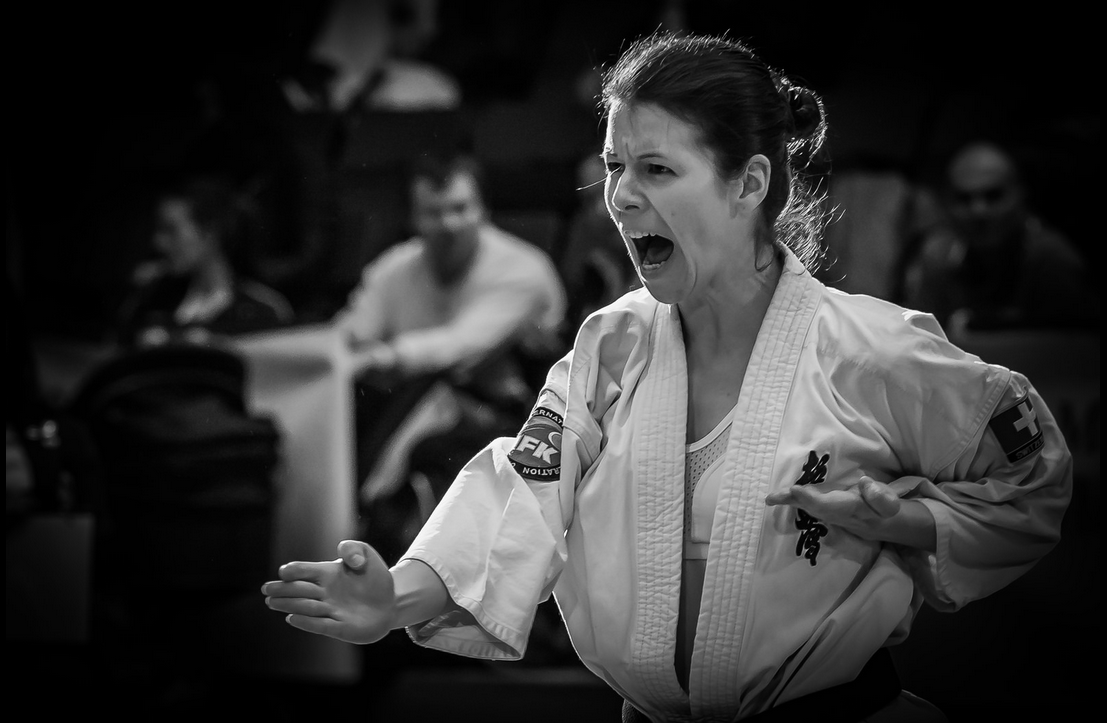KI ( chi ) – inner energy
AI – uniting, joining
KIAI (Kihap or kyap) is the consequence of a special kind of breathing. It is usually said that it is a guttural sound, but the right KIAI comes from the abdomen as a result of strong expiration.
The real KIAI is the consequence of the unconscious part of the human being and it is not deliberately provoked.
KIAI is largely connected to proper breathing because the right KIAI means the proper expiration, and only the proper expiration enables the proper inhalation. Moreover, the contraction of abdominal muscles while exhaling strengthens the trunk, i.e. the pelvis as the axis around which extremities rotate.
The technique of strong guttural expiration was also applied by Zen masters for explaining some ideas to their disciples and they called it KATSU.
Dan Tien is a Chinese name for the central point on the human body, which is located just below the navel and they equate that affects breathing. The Japanese name for the same point is HARA.
The Greek name for this point is pneuma (airflow, breath, or life forces).
By observing human movement or stillness in a short time interval it is possible to see two basic possibilities for man’s relationship to the surroundings in which he finds or doesn’t find support.
The complete expiration lowers the unconscious brunt of the body in the surroundings where we find ourselves, while we strengthen the central part of the body around which peripheral attachments circulate under the impact of the force of muscle contraction. All the life phenomena are connected to the process of oxidation or reduction, i.e. without oxygen, there is no life.

The supply of our cells depends on blood and oxygen transport by blood.
While contracting, the muscle gets up to ten times more blood than when it rests, thus taking more oxygen and glycogen.
The input of oxygen is just one function of the exhaling function which also covers the rejection of CO2. The cells become free of waste products so that they release them into blood, and this cleansing particularly takes place in the lungs.
To sum up, the complete expiration, i.e. KIAI is the condition without which there is no right and complete inhalation.
The volume of air that the lungs can take is called “the vital capacity”.
The aim of numerous breathing techniques is to enlarge that capacity. Nevertheless, before enlarging it to the maximum we should use the amount we already have as the result of strong expiration (KIAI).
The movements of the diaphragm and the chest speed the venous circulation in the whole organism. The muscles of the diaphragm are ones of the strongest in the human body. The expiration KIAI which consists of AU, AI, OI or EI makes the whole skeleton of the thorax vibrate, which proves that vibrations are transferred to the air mass closed in the lungs so that the gentle membrane of alveoli in contact with the air vibrates stimulating pulmonary cells gases replacement.
The more recent works of Western physiologists report that this vibration has a very noticeable effect on endocrine glands, which science pays more attention to.
It has been proven that the emission of vowels during the exhaling (KIAI) causes a vibratory self-massage of organs. These vibrations reach the deepest tissues and nerve cells enlarging the blood circulation in the organs.
Endocrine glands that send hormones directly into blood and lymph are getting stimulated (the pituitary, the thymus, the adrenal gland, etc.) as well as sympaticus and the brain nerve subject to this useful influence of vocal vibrations.
Find the full article HERE.
Source: blackbeltmag.com



